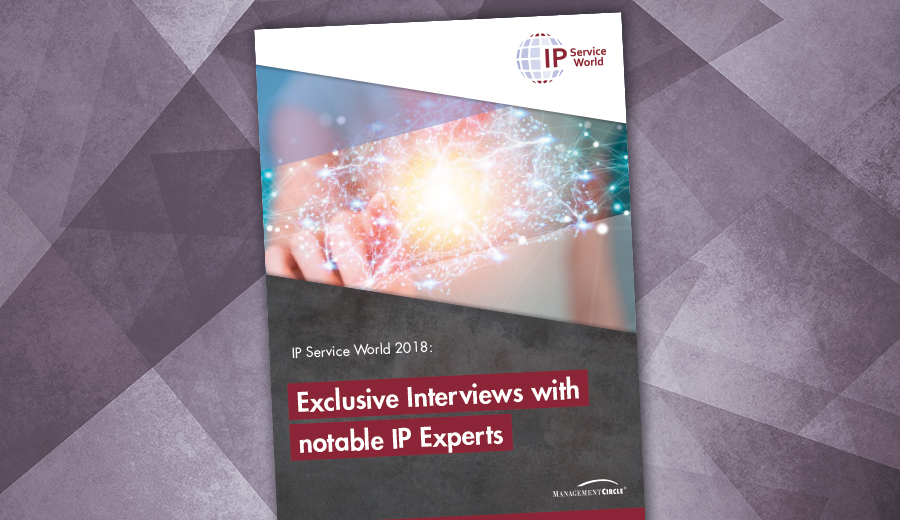
One of the key challenges facing IP Managers is getting your R&D team to collaborate on IP matters. Simon Carr, Evalueserve IPR&D, explains how to take control and learn how to reduce IP risks through the research and development process and beyond and engage R&D in the process.
Simon Carr is the head of IP and R&D Solution Delivery and Systems Design consulting for Evalueserve in Europe. His expertise is finding solutions for client’s complex intellectual property problems. He does so through his experience of managing corporate IP to help clients identify and improve their internal processes.
Simon was named inventor on six patent families, showcasing his passion for innovation, something he always wants to share with his clients.
He obtained a postgraduate diploma on Strategy and Innovation at the Saïd Business School at University of Oxford.
Frustrated by a lack of cooperation with your R&D teams? Maybe it’s time for a new IP language that will increase your engagement, reduce your risks, and highlight value creation opportunities.
The challenge of engaging R&D staff
In most Research and Development organizations, IP Managers compete for their R&D colleagues’ time with a multitude of factors. These factors include project pressures and a younger audience who may not be as savvy about intellectual property issues. However continuous, high-quality engagement with R&D staff is critical if IP Managers are to ensure Freedom to Operate (FTO) through the development/product lifecycle, and get R&D involved and interested in other IP processes.
Is training effective?
Throughout my ten years in corporate IP management, I developed multiple training courses and delivered those trainings to a diverse audience of R&D colleagues, ranging from newly recruited scientists through to experienced managers. While this training never failed to generate interest and enthusiasm at the outset, IP soon became somewhat of an afterthought once the reality of project deadlines and deliverables began to bite. Ultimately, this would lead to some painfully close calls during FTO. This experience led me to find a new language for project IP that would increase collaboration and engagement throughout the project lifecycle, leading to more successful IP outcomes.
Reframing the language of project IP
Reframing project IP management in the language of Risk Management immediately positions it in terms that all project managers will know and understand. If we look at conventional teaching on Product Development Risk Management, there are multiple factors listed. Unfortunately, IP is never included in this list. However, using this approach gives project managers a well-structured framework that, when followed, should minimize their IP risks.
A clearly defined Risk Management process will also lead to Value Creation
The project management process for mitigating risks is as follows:
1
Early landscaping:
This is the time to identify areas of Risk and opportunities for Value Creation and sets the baseline for all further process steps.
2
Project patent watches:
Monitoring relevant patents will allow continuous updates of risk understanding and the deployment of appropriate mitigation measures
3
Pre-launch Freedom to Operate Search:
This stage then becomes a relatively low risk exercise, as most IP risks should have been identified and avoided/mitigated in the prior steps.
4
Alerting provides R&D with valuable insights:
Effective and reliable identification of critical third-party patents (and getting them flagged for post-grant opposition) is impossible without the help of reviewers in R&D. If you want their support, you need to give them something. Start with a painless process and a simple tool to ensure relevant alerts with a high precision, and re-use the data to give them what they need for their work (such as quarterly summary of results.) Some companies even feed a current awareness process into the alerting so that while R&D engineers deliver on the task for IP, they also get what they want.
5
Feed R&D with ideation support
IP usually has a significant amount of data from FTOs, patent watches and novelty searches. Within this information, a hugely valuable data asset is hidden: ideas for new inventions based on customer/ market needs, as well as ideas from third parties that are not yet mature. When R&D collaborates with IP teams, they can simply re-use the data to feed regular innovation ideas from IP. By providing this valuable information that can directly benefit R&D, these teams likely would be much more open to collaboration when you need them!
Evalueserve’s IP services, analysts, and experience will help IP Managers deliver these stages in clear and concise terms. This will not only improve IP understanding in the R&D environment, but also will increase the likelihood of successful project outcomes significantly.
Conclusion
Your company’s R&D team has much to gain from collaborating with the IP team, and vice versa. Setting up a project management plan and tools that help both teams with minimal effort is the best way to ensure success.
To learn more, we hope you can attend Simon Carr’s speech at IP Service World Munich on November 26th at 1:40pm in Room Munich or meet us at booth IP 14.
Additionally, see our IPR&D Information Adventurers Blog for more thought-provoking and insightful views on the intersection between data science and the unique information needs within IPR&D Search and Intelligence, Landscaping and other services. Please Contact us with any questions or to share experiences you’ve had working with R&D for IP.
Evalueserve is the largest IP and R&D service provider; offering a unique approach to quality patent searching, patent analytics and innovation intelligence. Our revolutionary Search and Intelligence quality index allows, for the first time, the quality of a search to be determined. Coupled with customized curated data for better insights we bring a unique proposition to the market. We additionally offer industrialized, high volume digital patent drafting, prosecution and IP docketing. Our mind+machine™ approach is a unique combination of human expertise and best-in-class proprietary technologies (such as Insightloupe) which use smart algorithms to simplify key tasks, control and improve output of complex analytics task and provide an advanced digital experience to clients.





